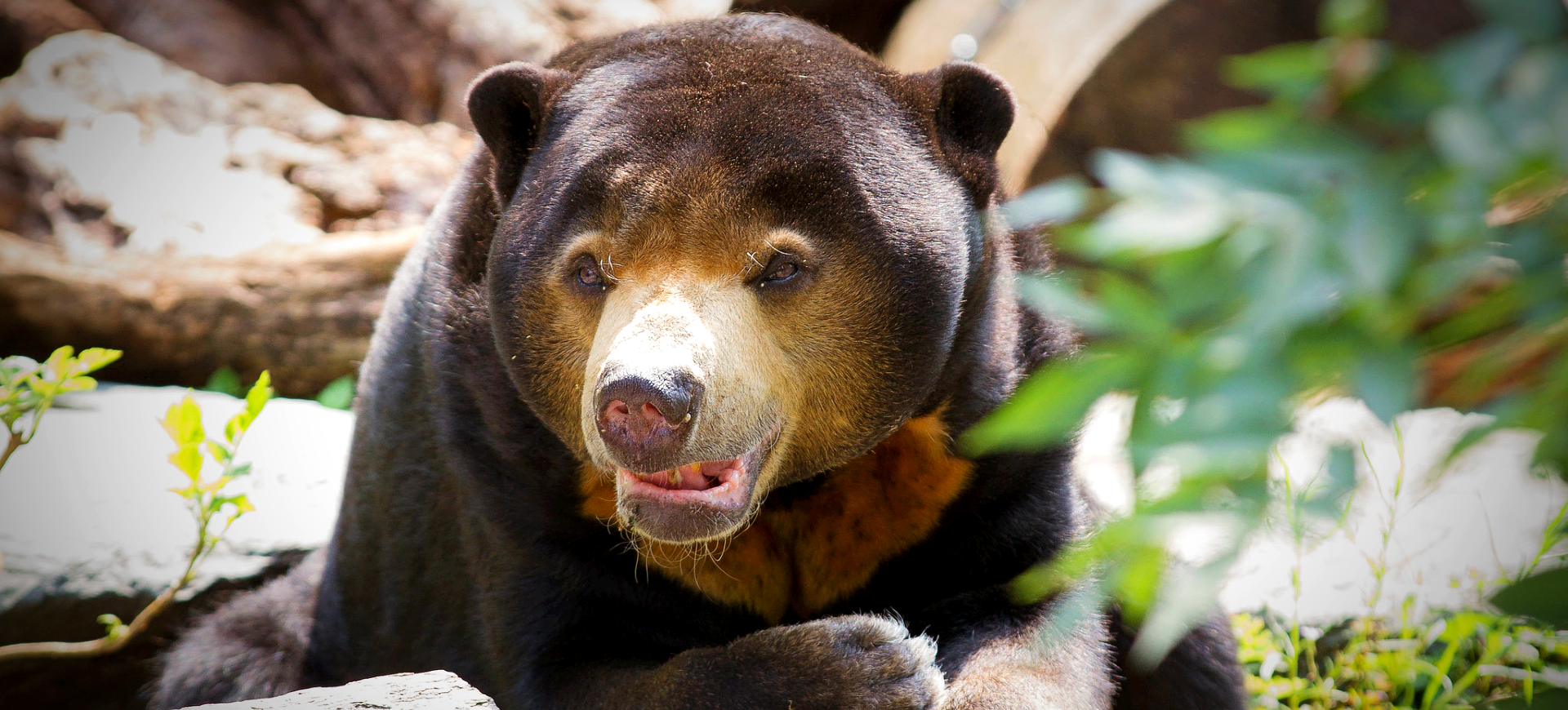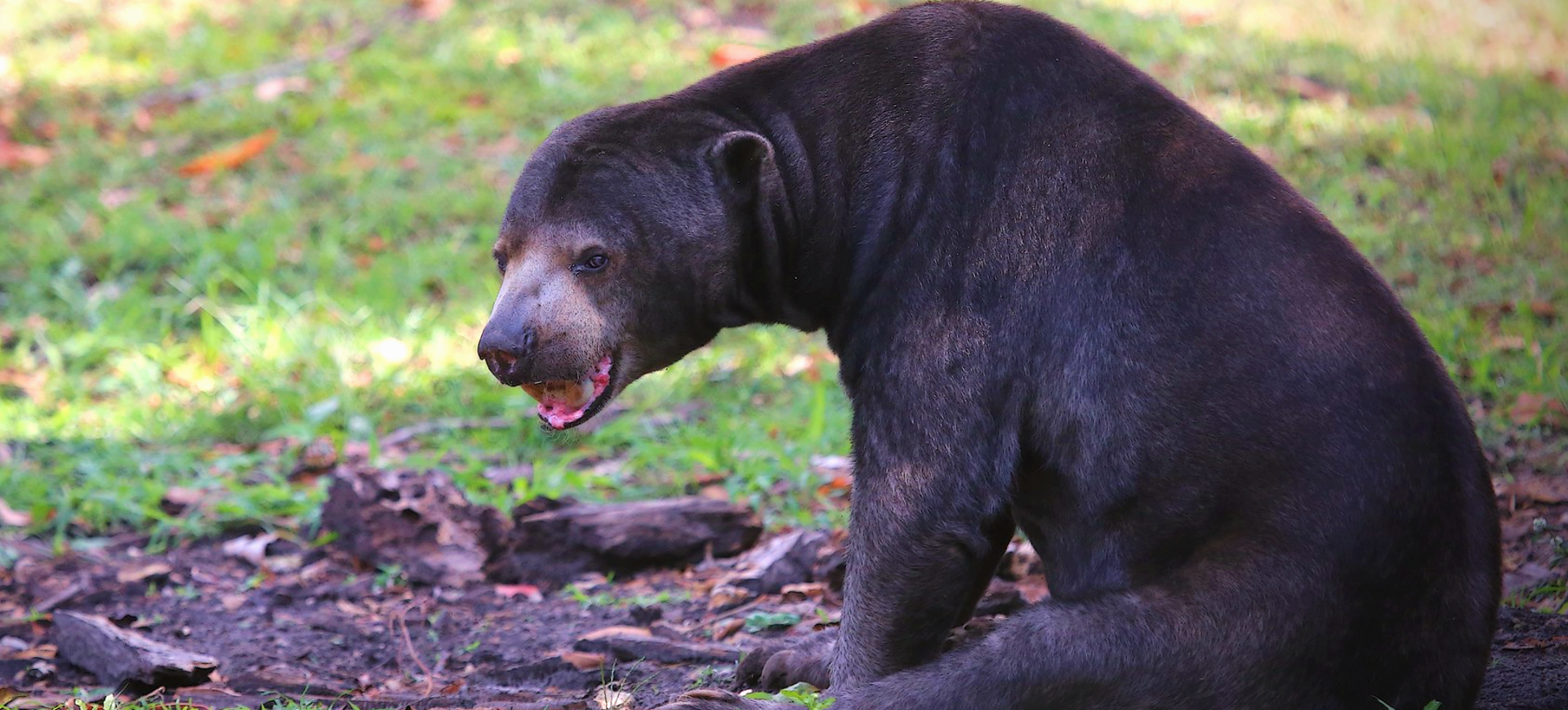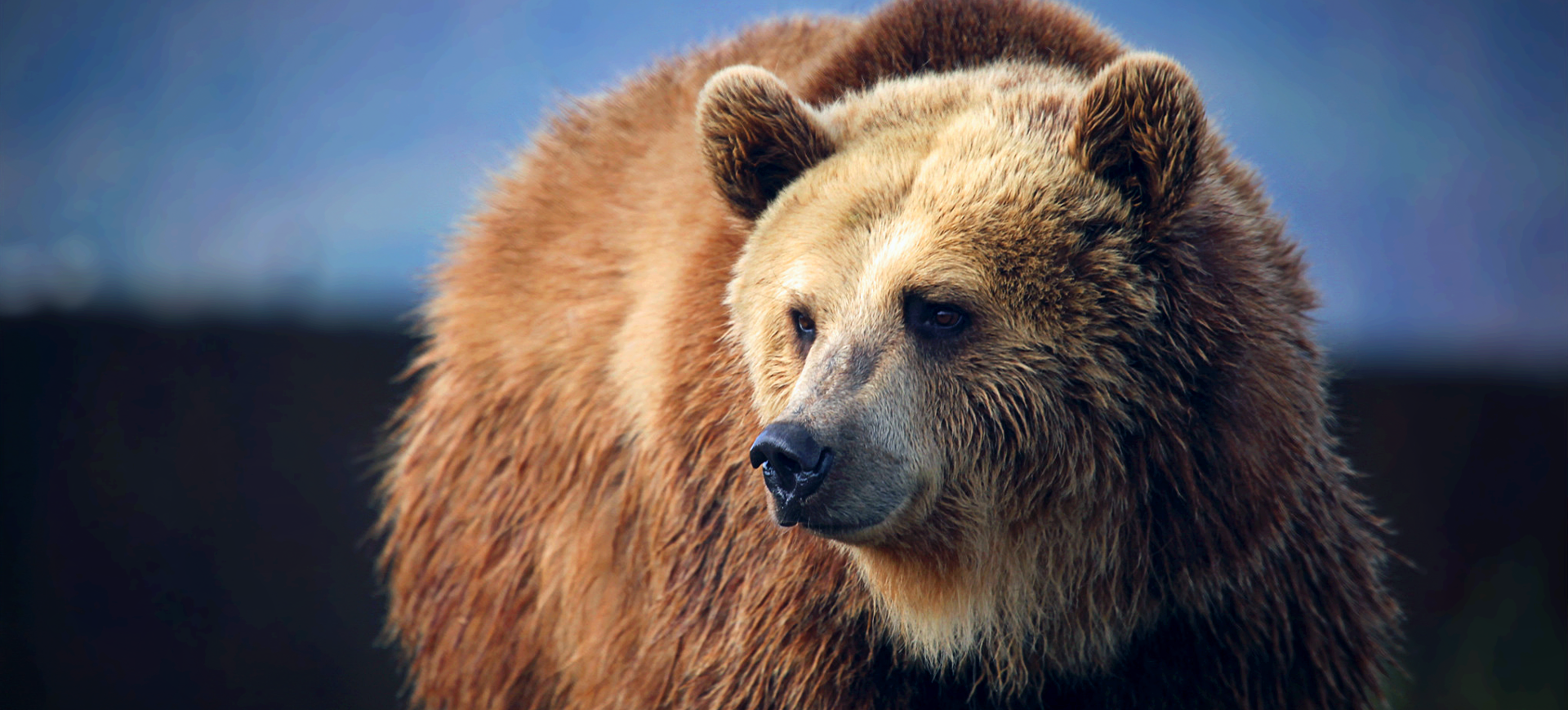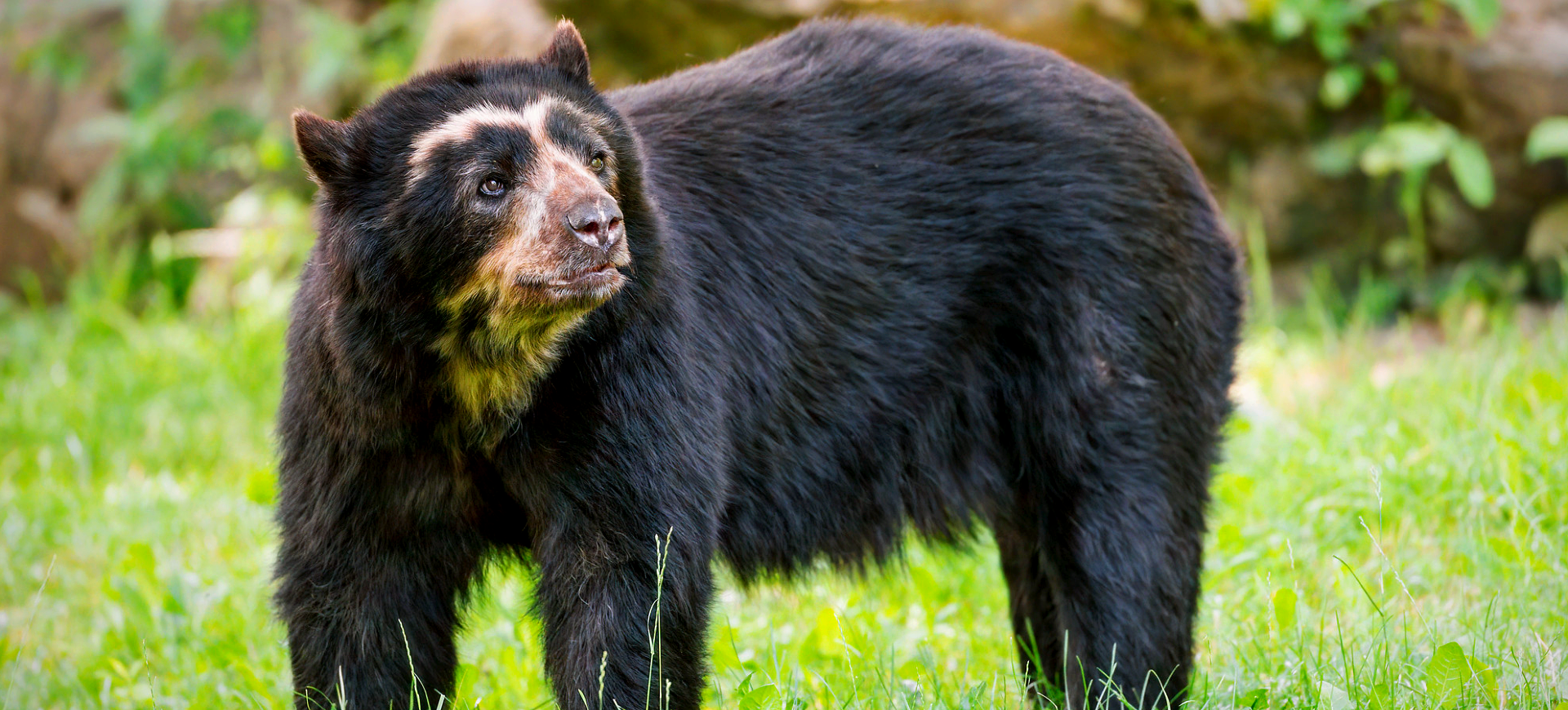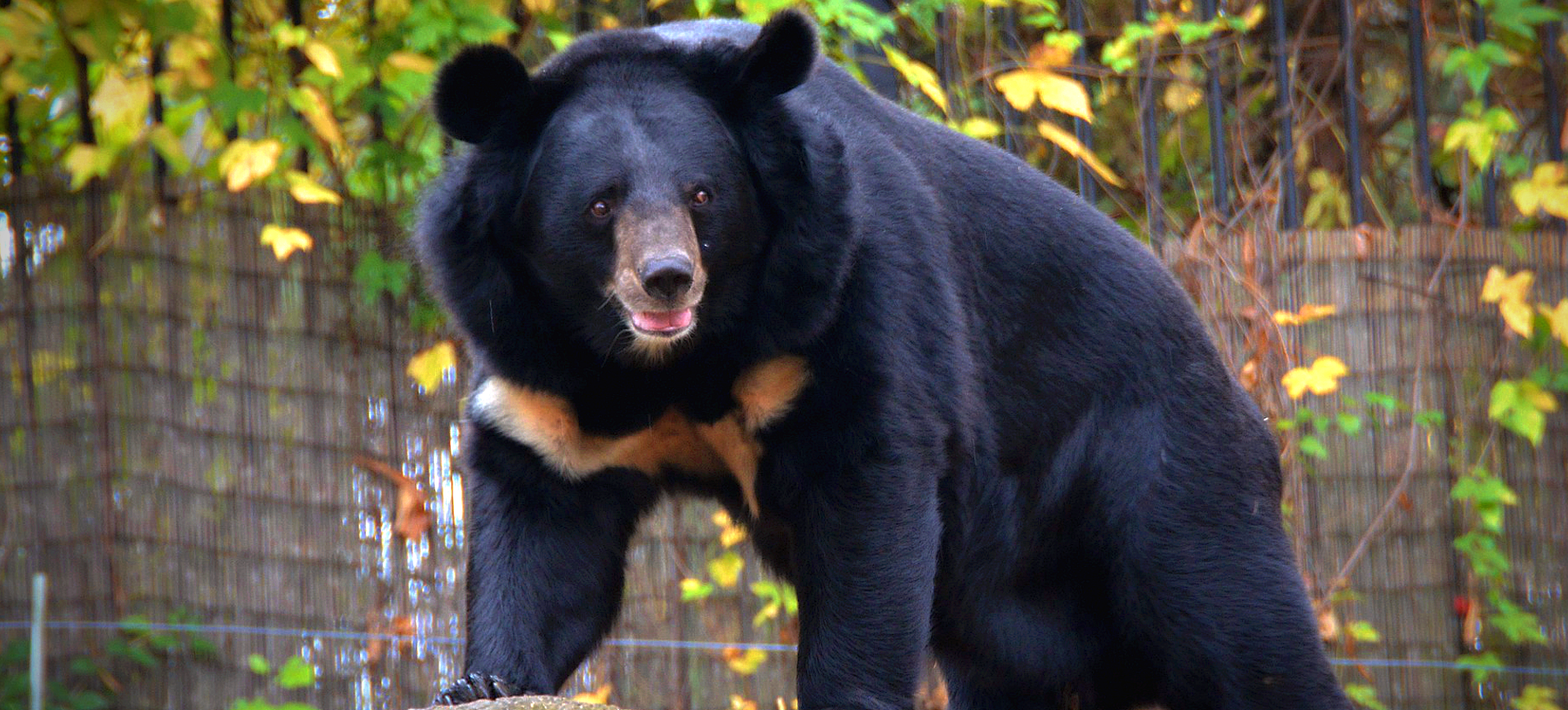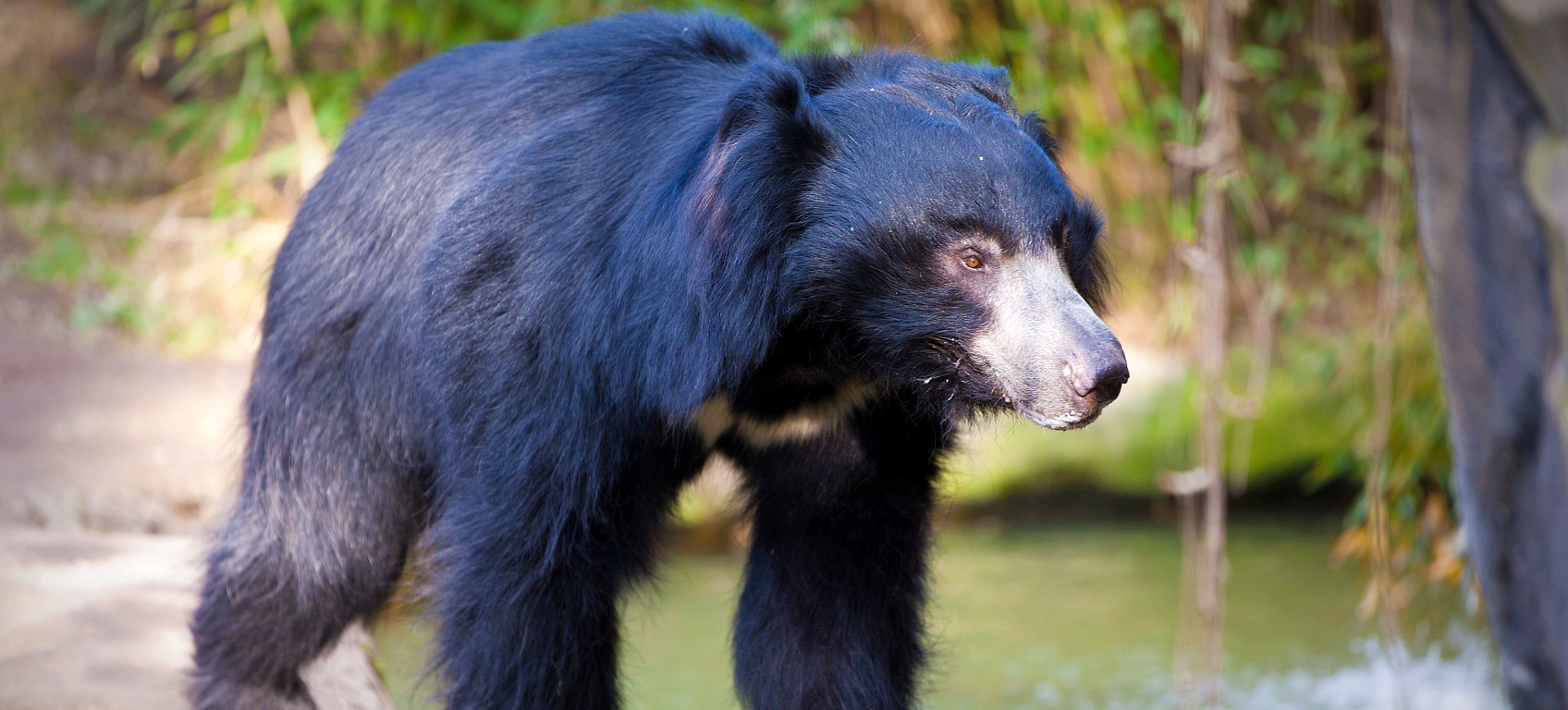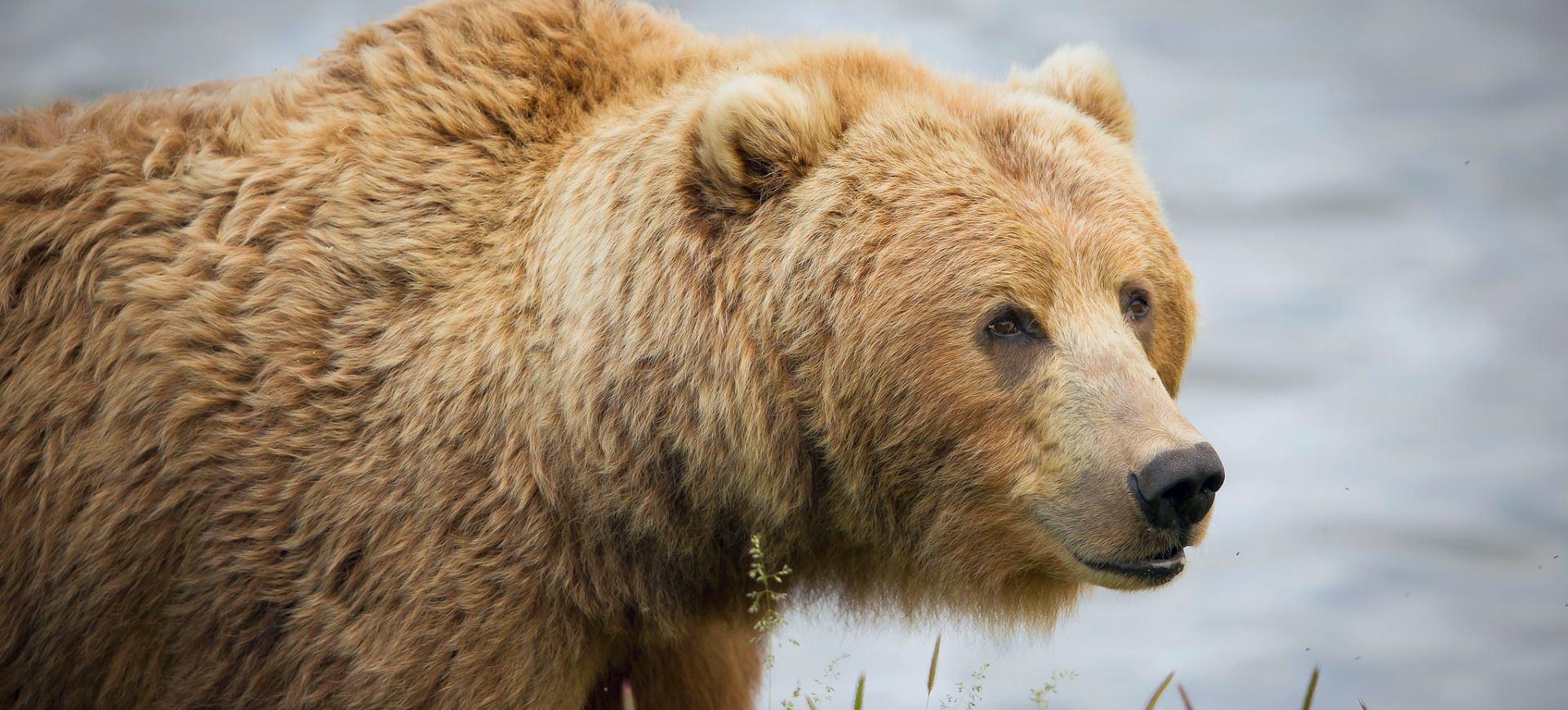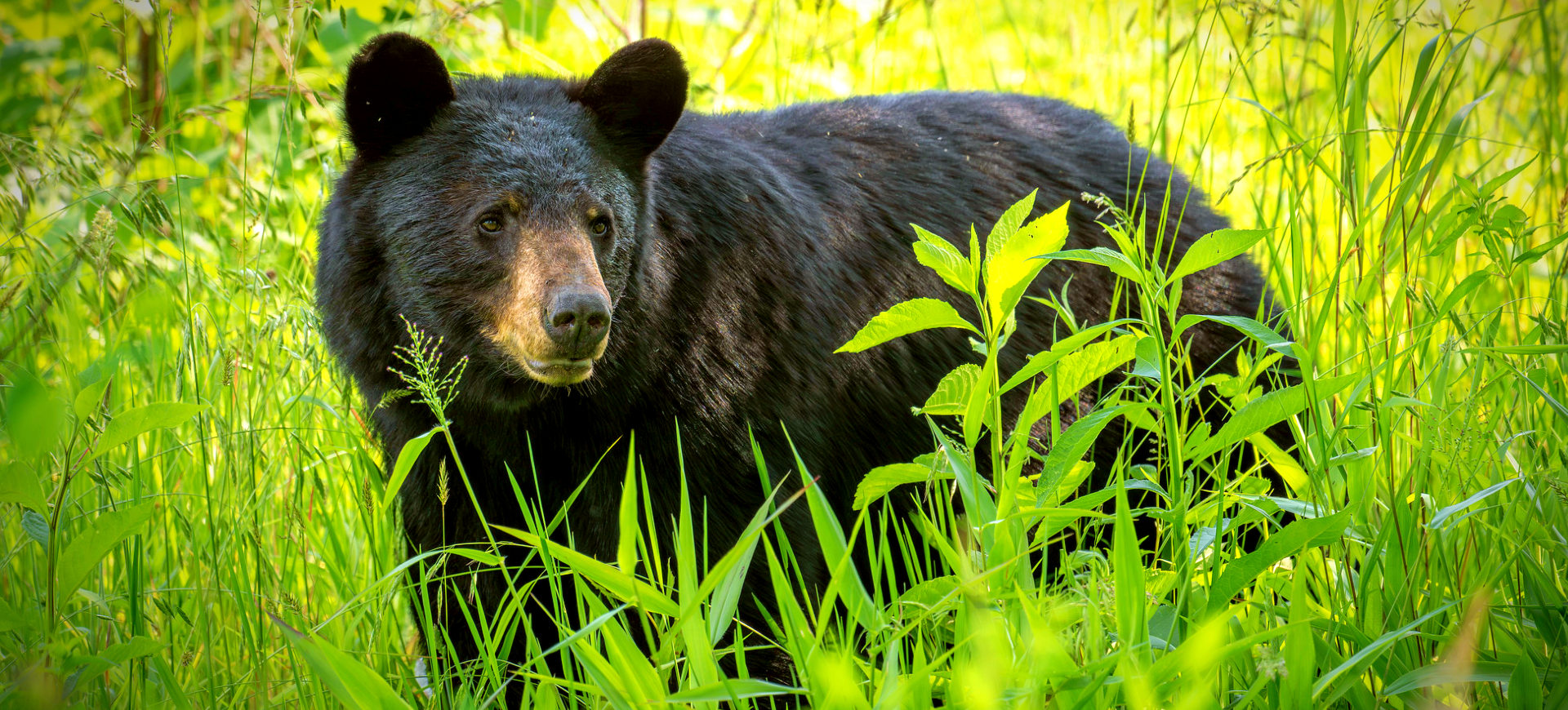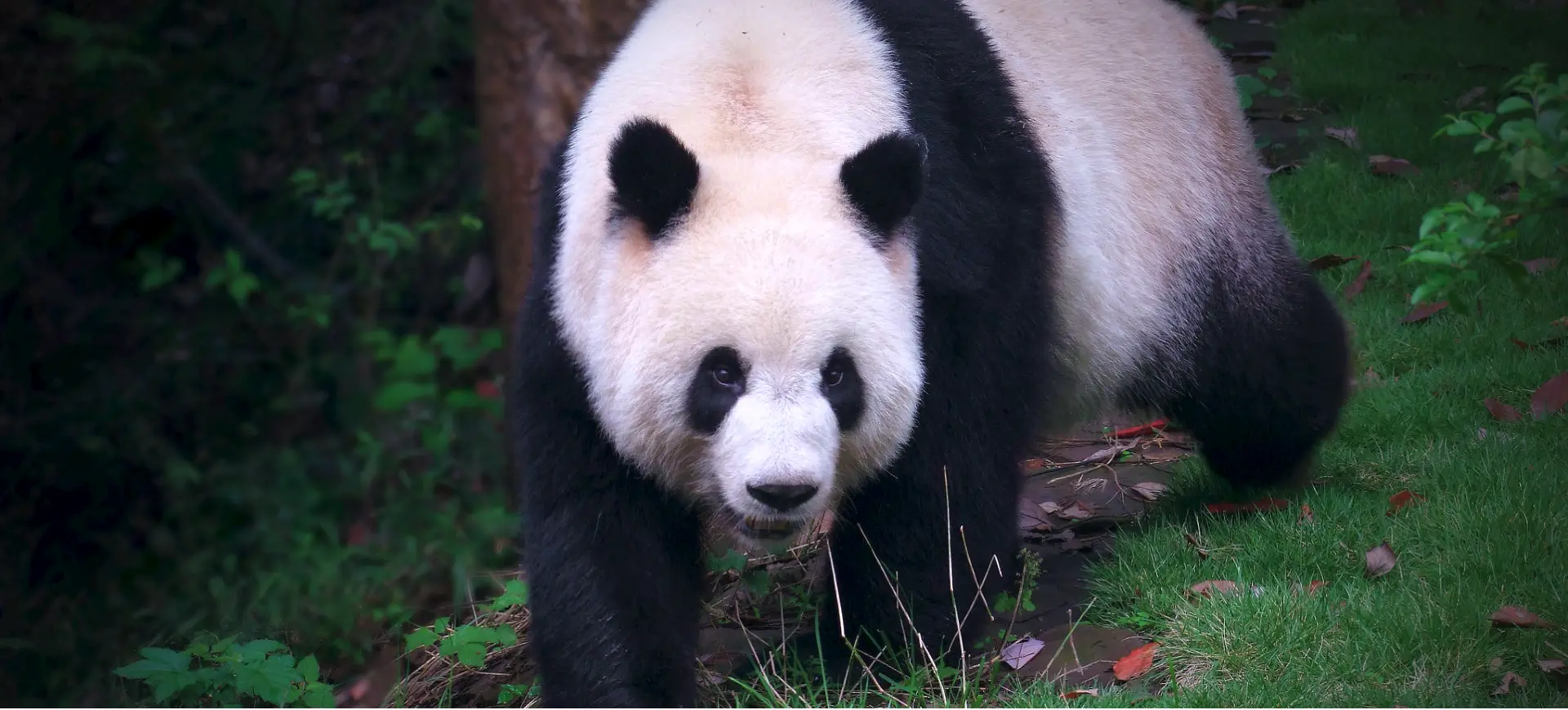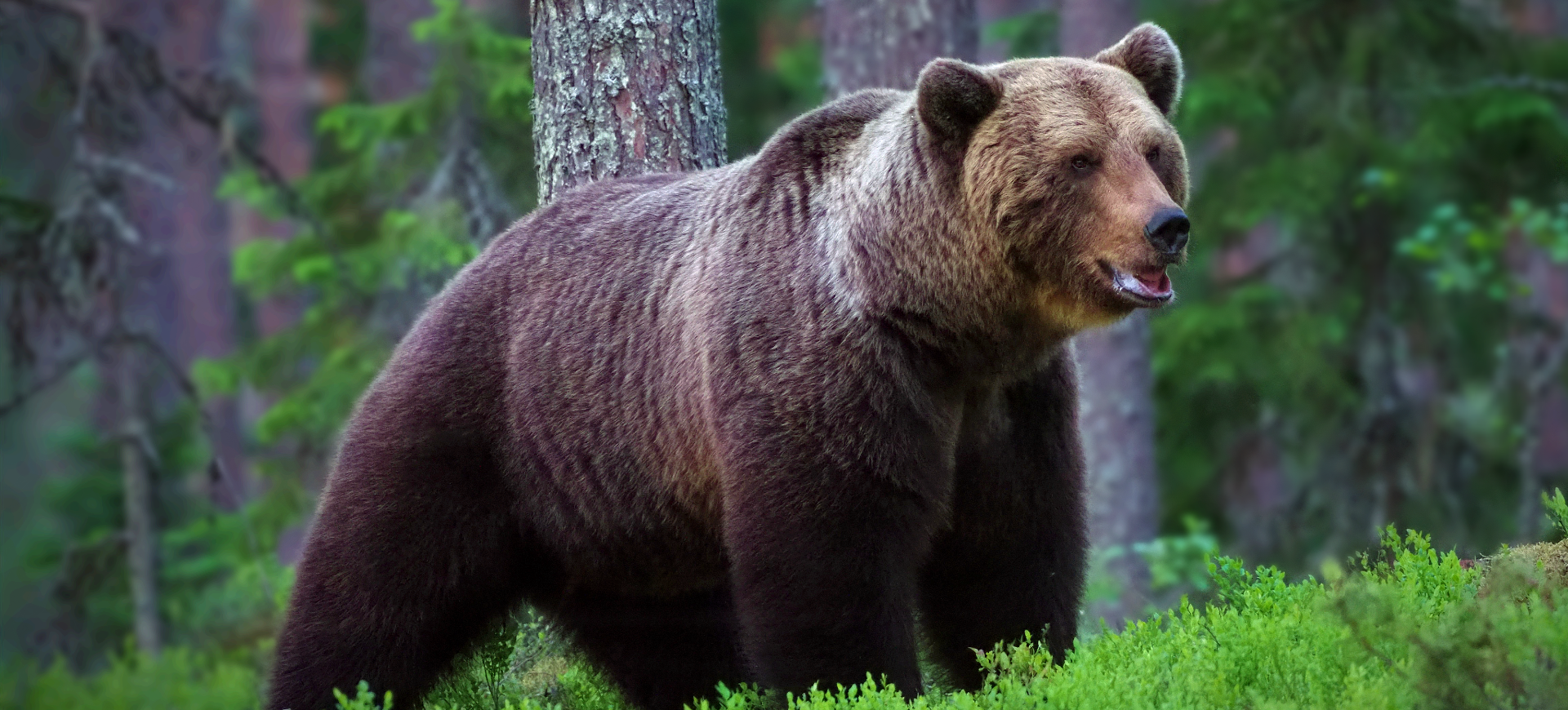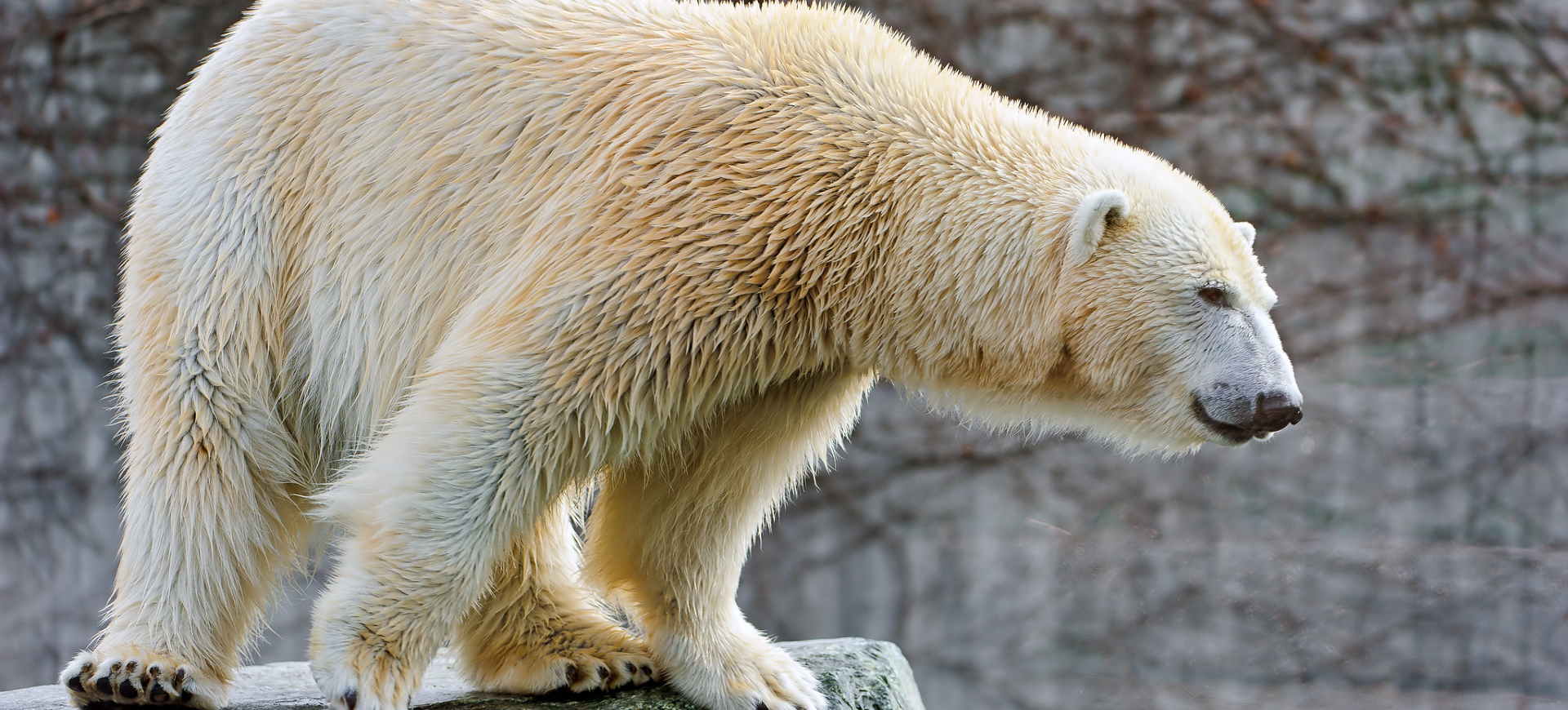Overview
The Sun Bear, named for the golden or white patch on its chest, is the smallest member of the bear family and is known for its exceptional climbing abilities. Native to the tropical forests of Southeast Asia, Sun Bears have a compact and muscular build that is well-adapted to their arboreal lifestyle. They have a characteristically short muzzle and large paws equipped with sharp, curved claws, which make them proficient climbers and efficient foragers. Despite their small size, Sun Bears play a vital role in maintaining the health and diversity of their ecosystems by dispersing seeds and controlling termite populations.
Sun Bears are primarily nocturnal and solitary animals, coming together only to mate. They have an excellent sense of smell, which they use to locate food, and a long, slender tongue to extract honey from bee nests, earning them the alternative name, ‘Honey Bear.’ Though they are not as vocal as other bear species, Sun Bears communicate through body language and scent marking.
As a result of rapid habitat loss, poaching, and the pet trade, Sun Bears are now listed as Vulnerable on the IUCN Red List. Their elusive nature and the dense forests they inhabit make population estimates challenging, further complicating conservation efforts. Several initiatives are underway to protect and study these unique bears, offering hope for their future.
Taxonomy
Kingdom
Phylum
Class
Order
Family
Genus
Species
Type
Physical Description:
The Sun Bear is a small, compact, and muscular bear characterized by its short, sleek, and dense black fur, which helps to keep them dry in their wet habitat. Their name derives from the unique, horseshoe-shaped, golden or white patch on their chest, often said to resemble the rising or setting sun. Each bear’s chest patch is distinct, much like human fingerprints.
Sun Bears have short muzzles and small ears, providing a distinctive facial profile. Their eyes are small and usually dark brown or black. One of their most distinctive features is their extraordinarily long tongue, which can reach lengths of up to 9.8 inches (25 cm), used to extract honey from beehives and insects from logs. Their large paws are equipped with sharp, sickle-shaped claws that aid in climbing and digging. Despite their small size, Sun Bears possess potent jaws capable of cracking open nuts and tearing apart tree bark to access food.

Lifespan: Wild: ~25 years || Captivity: ~30 years

Weight: Male: 60-150 lbs (27-68 kg) || Female: 40-90 lbs (18-41 kg)

Length: Male: 47-59 in (120-150 cm) || Female: 40-53 in (102-135 cm)

Height: Male: 24-30 in (60-70 cm) || Female: 22-26 in (55-65 cm) at Shoulder

Top Speed: 30 mph (48 km/h)
Characteristic:
Native Habitat:
Sun Bears are native to Southeast Asia and are primarily found in lowland tropical rainforests. These forests provide ample food resources and cover potential predators. Their range extends from northeastern India in the west, across southern China, and down into Malaysia, Indonesia, and as far east as Borneo and Sumatra.
Their preferred habitat is warm temperatures and high humidity, dense undergrowth, and rich biodiversity. As exceptional climbers, Sun Bears spend a significant portion of their time in trees, where they forage, rest, and sometimes even nest. They can construct platforms from branches where they sleep or sunbathe.
Climate Zones:
Biomes:
WWF Biomes:
Biogeographical Realms:
Continents:
Diet:
Diet & Feeding Habits:
Sun Bears are omnivores with varied diets that include fruits, berries, roots, insects, small mammals, birds, and honey. They have a particular preference for honey, and their long tongues are adept at extracting honey from beehives, leading to their nickname “Honey Bear.” Despite being classified as carnivores, plant matter constitutes a significant part of their diet.
In the wild, Sun Bears play a crucial role as seed dispersers. After consuming fruits, they excrete the seeds in different locations, thus aiding in the spread of these plant species. In addition to fruit, Sun Bears also consume a significant amount of insects, particularly termites. They use their strong jaws and claws to break open logs and termite mounds, controlling termite populations and preventing them from causing significant damage to their forest habitats.
Mating Behavior:
Mating Description:
Sun Bears have a monogamous mating system, and couples often spend a few days together during the mating season before parting ways. Females are receptive to mating for only a short period, leading to intense competition among males. The mating season generally corresponds with the abundance of food, usually from June to July, though it can vary depending on the geographical location.
Following mating, females prepare dens for birthing, often in hollow trees. The gestation period lasts around 96 days, and the female gives birth to one or two cubs. These cubs are born hairless with closed eyes, relying on their mother for protection and sustenance. Maternal care lasts about two years, during which the cubs learn essential survival skills, including climbing and foraging.
Reproduction Season:
Birth Type:
Pregnancy Duration:
Female Name:
Male Name:
Baby Name:
Social Structure Description:
Sun Bears are solitary creatures, with males and females coming together solely for mating. They do not form permanent pairs or family groups; females raise their offspring alone. They are not territorial but have home ranges that they roam for food. These home ranges can overlap, and encounters between bears are usually peaceful.
Unlike many other bear species, Sun Bears do not hibernate due to the constant food availability throughout the year in their tropical habitat. They are primarily nocturnal or crepuscular, most active at dawn and dusk. While they do not form social hierarchies, Sun Bears communicate with each other using a variety of vocalizations, scent marks, and visual cues.
Groups:
Conservation Status:
Population Trend:
Exact estimates of the Sun Bear’s wild population are challenging due to their secretive nature, dense rainforest habitat, and widely scattered populations. However, the consensus among scientists is that their numbers are dwindling, with an estimated wild population of fewer than 2,000. This estimate, nonetheless, should be taken with caution, as comprehensive studies on Sun Bear populations have not been conducted across their entire range.
The fragmentation of their population, driven by habitat loss and human encroachment, presents a severe threat to the survival of this species. Fragmentation hinders the mobility and interaction of Sun Bears, limiting genetic diversity and rendering small, isolated populations vulnerable to extinction. The survival of these bears is further threatened by the rapidly declining quality of their habitats, reducing their access to vital resources such as food and shelter.
Population Threats:
Sun Bears face several significant threats, mainly stemming from human activities. The primary threat to their survival is habitat loss due to deforestation for timber and conversion to agriculture, particularly for palm oil plantations. The loss of forest habitat results in the fragmentation of their population and a reduction in the availability of food resources.
Additionally, they are threatened by illegal hunting and the wildlife trade. Sun Bears are hunted for their gallbladders, paws, and meat, which are highly prized in certain cultures for their supposed medicinal properties and as a delicacy. Despite being protected by law in most of their range, enforcing these laws is often inadequate. Furthermore, they often conflict with humans when they venture into agricultural areas for food, leading to retaliatory killings.
Conservation Efforts:
Conservation efforts for the Sun Bear include both legal protection and on-the-ground initiatives. They are listed in Appendix I of the Convention on International Trade in Endangered Species (CITES), which prohibits international trade in specimens of these species. In most countries within their range, killing Sun Bears is illegal.
However, law enforcement is often lacking, and illegal hunting continues. Therefore, much of the conservation work involves raising awareness about the Sun Bear’s plight, education on their ecological role, and the importance of conserving their habitats. Efforts are also made to strengthen law enforcement and curb the demand for bear parts. Reforestation and creating wildlife corridors to connect fragmented populations are essential conservation strategies in areas where habitat has been lost.
Additional Resources:
Fun Facts
- Despite being the smallest bear species, Sun Bears have the most extended tongues relative to body size, reaching up to 9.8 inches (25 cm).
- Sun Bears are excellent climbers and spend much of their time in trees. They can often be seen resting or sunbathing high in tree canopies.
- The unique patch of golden or white fur on their chest is said to represent the sun and gives this bear its common name.
- Sun Bears have a strong sense of smell that is 1,000 times better than humans, helping them locate their food and mates and detect danger.
- They have loose skin that allows them to twist and turn when a predator has grabbed hold, enabling them to bite the attacker.
- Despite their small size, Sun Bears have mighty jaws and can bite through tree bark and crack open nuts with their teeth.
- Sun Bears are also known as “Honey Bears” due to their love of honey and ability to raid beehives with minimal bee stings.
- Unlike most other bear species, Sun Bears do not hibernate because food is available all year round in their tropical habitat.
- Their natural predators are tigers, leopards, and python snakes, but the most significant threat to Sun Bears is human-related activities.
- The exact lifespan of Sun Bears in the wild is unknown, but they can live for up to 30 years in captivity.






